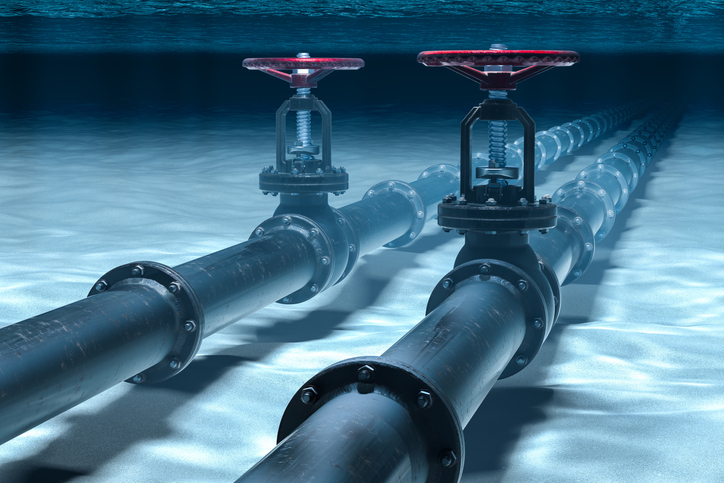

Scotland’s hydrogen export strategy is no pipe dream
With some of the strongest wind speeds in Europe, Scotland has the potential to be one of the continent’s biggest producers of clean hydrogen.
To get that hydrogen to buyers in Germany and beyond, Aberdeen’s Net Zero Technology Centre (NZTC) last month proposed the building of a new pipeline that would carry the clean fuel from Scotland to Europe.
Europe is set to be a huge consumer of hydrogen as it seeks to decarbonise its heavy industry, transport and energy sectors and while Germany and other industrial centres in the European Union are able to produce hydrogen themselves, it needs to import a lot as well.
Germany updated its hydrogen strategy over the summer, stating that it will have to import up to 70% of its hydrogen demand in the future as it aims to achieve carbon-neutrality by 2045.

Europe is set to be a huge consumer of hydrogen as it seeks to decarbonise its heavy industry, transport and energy sectors and while Germany and other industrial centres in the European Union are able to produce hydrogen themselves, it needs to import a lot as well.
Meanwhile, Scotland has the potential to produce more renewable electricity than it needs. While its economy is about 1.2% the size of the Europe Union, its offshore wind potential is between 4% and 6% of Europe’s total.
The Hydrogen Backbone Link would pipe hydrogen produced from Scotland’s rapidly expanding fleet of offshore wind farms to Germany. Green hydrogen is created by splitting water with electrolysers powered by renewable energy.
The project could be transformative for Scotland’s economy as it prepares for a world without hydrocarbons and it can no rely on revenue from its oil and gas industry.
The NZTC believes the pipeline could supply as much as 10% of Europe’s projected hydrogen imports by the mid-2030s. Europe is expected to need about 333 TWh of hydrogen a year by 2030, rising to 1000 TWh a year by 2050.
____________________
Related reading:
Extreme H on track to drive change in motorsport
____________________
The project could also create 700 direct jobs in Scotland in the next decade as well as supporting thousands more by helping to develop the hydrogen economy.
“I think you could unlock the whole hydrogen economy [via the pipeline],” Roy Stenhouse, chief impact officer at NZTC told the Financial Times recently. “Everyone is looking for a home for their hydrogen [production] projects.”
Other European hydrogen pipeline projects include H2Med, which will carry 2 million metric tonnes hydrogen produced in Spain and Portugal to France and Germany. The 140 km H2 Interconnector between the Danish island of Bornholm and Lubmin in north-east Germany, is expected to be operational by 2027, while a separate pipeline between Norway and Germany is aiming for completion by 2030.

A proposed Hydrogen Backbone Link would pipe hydrogen produced from Scotland’s rapidly expanding fleet of offshore wind farms to Germany. Green hydrogen is created by splitting water with electrolysers powered by renewable energy.
The Hydrogen Backbone Link is not just a pipe dream; it has attracted investment from the serious players including Shell and EnQuest, while the Scottish government has also pledged £3.2m to the project through 2025. To complete, it is estimated the Hydrogen Backbone Link will cost about £2.7bn.
Some of the cheapest green hydrogen is expected to be produced in placed like Brazil and Saudi Arabia where abundant solar resources mean electrolysers can be powered by some of the cheapest renewable energy on the planet. However, transporting hydrogen over long distances is expensive due to the need to liquefy it by chilling it to super low temperatures and reverse the process at the other end, or by converting it to ammonia and back again.
Shippers may be charged 32 pence per kg to use the pipeline, according to analysts at Wood Mackenzie, making it competitive with hydrogen produced for less but with higher transport costs.
The Scottish government is investing heavily in clean hydrogen – in December 2022, it released its Hydrogen Action Plan with a plan to build 5 GW of clean hydrogen capacity by 2030 (half of the UK’s 10 GW total) and 25 GW by 2045 when it foresees achieving net zero as an economy.
“Our priority is to get as much renewable hydrogen into the energy system as quickly as possible, while also supporting the establishment of low-carbon hydrogen production at scale in the 2020s, linked to carbon capture and storage (CCS),” Michael Matheson, Scotland’s energy secretary said in the action plan’s launch document.
In 2022, Scotland awarded leases to 20 offshore wind projects with a combined capacity of 27.6 GW. Added to previous projects, it has a total pipeline of more than 40 GW, one of the largest in the world.
Many of those projects have already indicated they plan to produce hydrogen as part of their plans, whether at sea, to be piped back to shore using existing natural gas infrastructure, or on the mainland.
Clean hydrogen could provide Scotland with “greatest industrial opportunity since oil and gas,” Matheson said.
The Hydrogen Backbone Link could be a landmark project for the development of the hydrogen economy in Europe, providing cost-effective hydrogen to the continent’s industrial centres while spurring a boom in hydrogen investment in the UK.
To learn more about HYCAP, click here